Now we will consider four examples:
- NHT SB2 (sealed)
- NHT SB3 (sealed)
- Harbeth LS3/5A (sealed)
- PSB 1B (vented).
NHT SB2 uses a 5" mid-woofer. It's phase response at 80 Hz is about ideal.

Figure 1 - NHT SB2 amplitude and phase response
NHT SB3 uses a larger 6-1/2" woofer. It's extension is lower than 80 Hz and therefore its phase response at 80 Hz is less than 90 degrees. 45 degrees shift at 80 Hz to be exact. One can consider this as a violation of the assumption stated earlier.
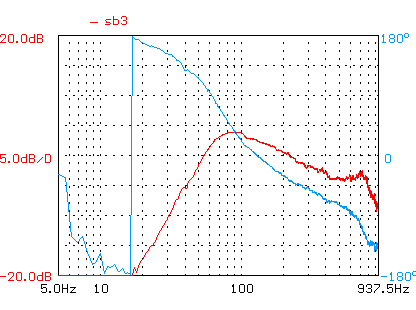
Figure 2 - NHT SB3 amplitude and phase response
3/5A is a classic 4-1/2" mid-woofer design. It's bandwidth is less than 80 Hz, therefore making it less ideal for crossover at 80 Hz.
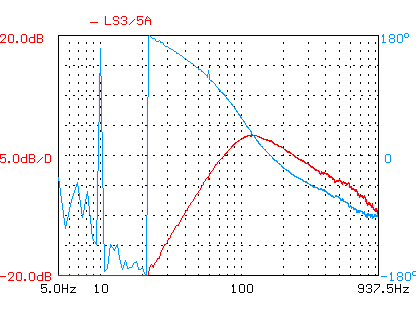
Figure 3 - Harbeth LS3/5A 3 amplitude and phase response
The PSB uses a 4 1/2" vented mid woofer. Due to the vented alignment, there is considerably more phase shift at 80 Hz.
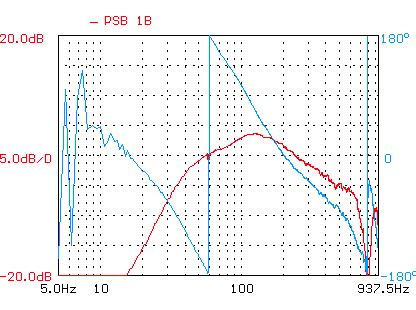
Figure 4 - PSB 1B 3 amplitude and phase response
In terms of difficulty in achieving a good phase alignment, the vented PSB is the most difficult. It's followed by the Harbeth due to the limited extension, then SB3. The SB2 is the simplest of these examples. If we place the plots of all four drivers together, we notice that they all have a similar slope to overcome baffle step.
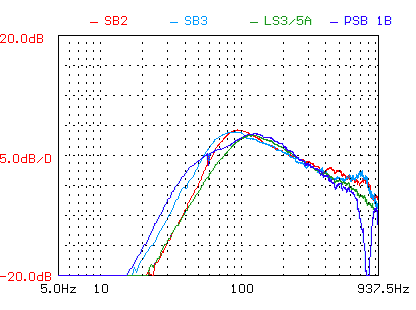
Figure 5 - Amplitude response of all four compared.
Integrating with our 15" servo sub
Now we will examine what happens when we try to integrate our 15" servo sub without phase adjustment. A 2nd order HPF (high pass filter) with corner frequency of 80hz and a 4th order LPF (low pass filter) are used on front speakers and subwoofer, respectively.
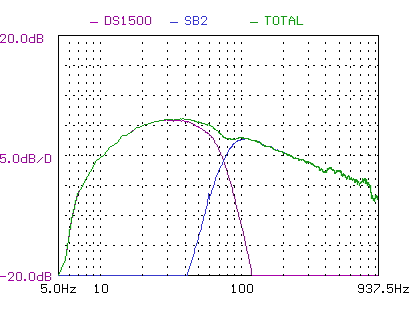
Figure 6 - NHT SB2 with 15" servo sub
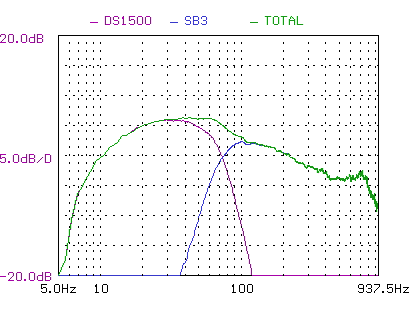
Figure 7 - NHT SB3 with 15" servo sub
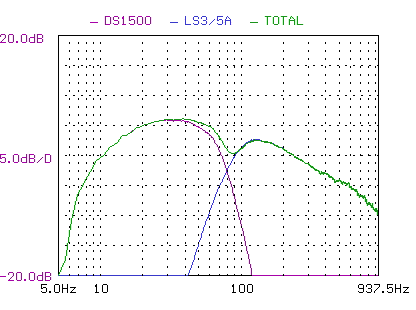
Figure 8 - Harbeth with 15" servo sub

Figure 9 - PSB with 15" servo sub

Figure 10 - NHT SB3 and subwoofer amplitude and phase plot with crossover
The SB3 alignment is decent, however, SB2 has slight dip. Harbeth 3/5A has an even larger dip, and the worst is PSB 1B. The main problem of PSB 1B is that the phase shift difference between the sub and front speakers after filtering is close to 180 degrees, or out of phase. Figure 10 shows the amplitude and phase plot of 15" sub and SB3. The gold and green curves are the phase curves of 15" sub and SB3, respectively. The amplitude crossover point is at around 75hz. So we should note even if we set the crossover corner frequency to 80hz, the actual crossover point can deviate slightly. Phase plot is always plotted between -180 degrees to +180 degrees and each vertical division is 45 degrees. When a phase value is outside this range, multiple of 360 is added or subtracted to get the value to within this range (from trigonometry). At 75hz, the sub (gold curve) and SB3 (green curve) read -170 degrees and 170 degrees. In this case, the phase difference is not 340 degrees. Instead, it is 20 degrees because in trigonometry -170 degrees is equivalent to 190 degrees. Therefore the actual phase difference is 190-170=20 degrees. When the phase difference is close to 0 at the crossover point, the combined response from sub and front speakers will be 6db (2x in amplitude) higher. However, when the phase difference is close to 180 degrees at the crossover point, the combined response will be less than the sub or front speaker by itself, a phenomena called cancellation. So how do we achieve the goal of zero or low phase difference? We need to reduce the phase lag of the subwoofer, or reduce the phase lead of the front speakers.
One way to do this is alter the distance setting on the subwoofer in your receiver. For instance, in the Denon receivers, all speakers by default are set to 12 ft distance. If your sub is at this distance, enter the distance as 3 ft further away than it actually is. The receiver will then delay the signal to the other speakers by that distance. Naturally, a greater difference in distance will result in a greater degree of phase adjustment.
Here's what happens when we apply this change to each of the examples.
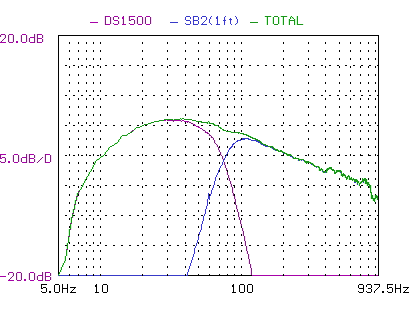
Figure 11 - SB2 with 1ft of phase lead
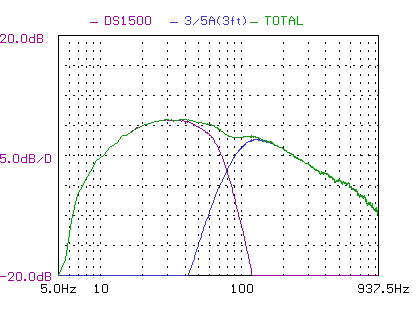
Figure 12 - Harbeth with 3ft of phase lead
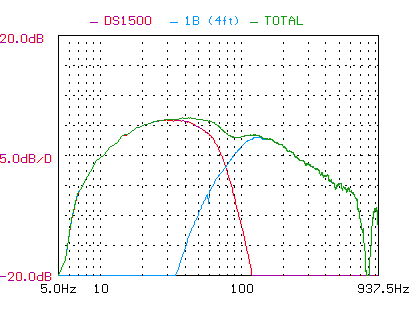
Figure 13 - PSB with 4ft of phase lead
After overlaying all four of them, we get:
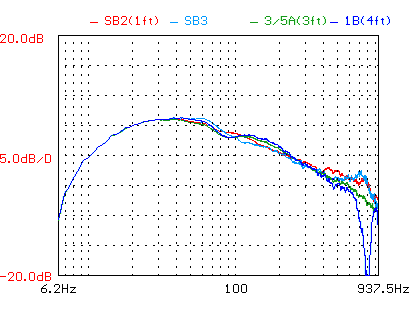
Figure 14 - All four summed response with phase lead to subwoofer
The result is now we have a decent phase alignment for all four.
If we limit our discussion to frequencies other than bass, it is recommended to start with flat frequency response. An uneven response can be an indication of more serious problems, such as resonances. Notice the notch on 1B at about 800 Hz. That is a resonance. Similarly, some minor resonance above 500 Hz for SB2/SB3. For bass frequencies, the roll-off can be modeled so close to ideal low pass or high pass filter, it is not really as crucial.
One rule of thumb is that if we use 6-1/2" woofer based front speakers in a sealed box, they can be comfortably crossed over at 80 Hz without much phase/delay time adjustment (the SB2 without delay time adjustment is already quite good). For anything equal to 4-1/2" for smaller, crossover at 100 Hz may cause localization. Placement becomes important. For vented box front speakers, large delay time adjustment may be needed.
Continue to calculating distance ![]()